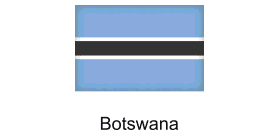 Tlokweng/Kopfontein Border Post Closure: What African Operators Need to Know for 24 September
Tlokweng/Kopfontein Border Post Closure: What African Operators Need to Know for 24 September
The temporary closure of the Tlokweng Border Post—known as Kopfontein on the South African side—on 24 September 2025 is set to impact a significant volume of cross-border movement between Botswana and South Africa. This key crossing, located just 15 km east of Gaborone’s city centre, is a vital artery for private vehicles, tourist flows, and commercial trucking between Gaborone and Zeerust, as well as onward connections to Johannesburg and Pretoria. The Botswana Unified Revenue Service (BURS) has cited operational challenges as the reason for the one-day suspension of services, affecting all travellers, commuters, and cross-border trade.
For Africa’s travel sector, this closure is more than a logistical inconvenience—it is a reminder of the importance of flexibility and up-to-date information in managing regional itineraries and supply chains. The Tlokweng/Kopfontein crossing is among the busiest in the region, serving as a preferred entry and exit point for both leisure and business traffic. Its temporary shutdown will require swift adaptation from operators, tour planners, and logistics providers who rely on this route for seamless movement of people and goods.
During the closure, alternative border posts will play a crucial role in maintaining connectivity. Travellers and commercial operators are advised to consider the following options:
Ramotswa Border Post (Swartkopfontein on
the South African side) is situated southwest of Gaborone and is
particularly suitable for those heading to or from Zeerust or
Rustenburg. This crossing offers a practical detour for private vehicles
and smaller commercial consignments, though users should anticipate
increased traffic and possible delays as volumes are redirected from
Tlokweng.
Pioneer Gate Border Post (Skilpadshek in
South Africa) is the principal crossing on the Trans-Kalahari Highway
(A2/N4), making it the preferred route for long-distance and commercial
traffic between Gaborone and the major South African cities of
Johannesburg and Pretoria. Its robust infrastructure and capacity to
handle high volumes make it a reliable alternative for freight and
scheduled coach services.
Lobatse Border Post (Ramatlabama on the
South African side) lies further south and is ideal for those connecting
to Mahikeng or seeking a less congested route. This crossing is
well-suited for both private and commercial vehicles, offering another
viable option for those affected by the Tlokweng closure.
Given the anticipated surge in traffic at these alternative crossings, all travellers are strongly encouraged to plan their journeys carefully. Allowing extra time for border formalities and potential congestion will be essential, especially for those with tight schedules or onward connections. Operators should also ensure that clients and drivers are briefed on the latest advisories from BURS and the South African Border Management Authority, as real-time updates may affect wait times and operational hours.
This closure highlights the ongoing challenges faced by border authorities in balancing security, efficiency, and infrastructure maintenance. For the African travel and logistics industries, it underscores the need for robust contingency planning and the value of maintaining strong relationships with border officials and local partners. The ability to pivot quickly in response to such disruptions is increasingly becoming a competitive advantage, particularly as cross-border trade and tourism continue to rebound across the region.
For those in the hospitality and tourism sectors, the closure may also present an opportunity to demonstrate proactive customer service. Communicating clearly with guests, adjusting transfer schedules, and offering alternative routing advice can help mitigate frustration and build trust. Similarly, freight and logistics companies should coordinate closely with clients to reschedule deliveries and manage expectations around potential delays.
Looking ahead, the temporary suspension of operations at Tlokweng/Kopfontein serves as a timely reminder of the dynamic nature of African border management. As infrastructure investments and digitalization efforts continue to reshape the continent’s ports of entry, operators who stay informed and agile will be best positioned to capitalize on new opportunities and navigate inevitable challenges.
In summary, while the closure of the Tlokweng/Kopfontein Border Post on 24 September 2025 will disrupt established travel and trade patterns for a day, the availability of alternative crossings and the resilience of Africa’s travel sector ensure that movement between Botswana and South Africa will continue with minimal long-term impact. By planning ahead and staying alert to official updates, industry professionals can turn this temporary challenge into an opportunity to showcase adaptability and service excellence in a rapidly evolving regional landscape.
